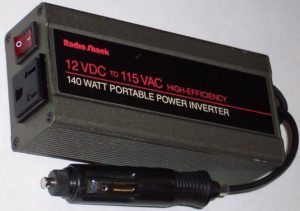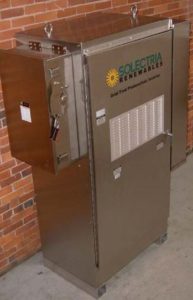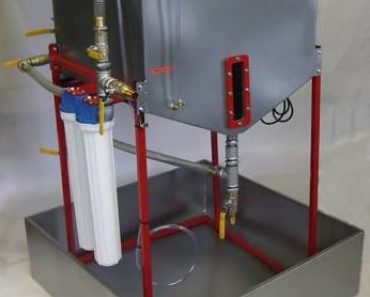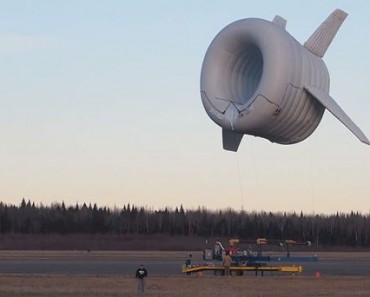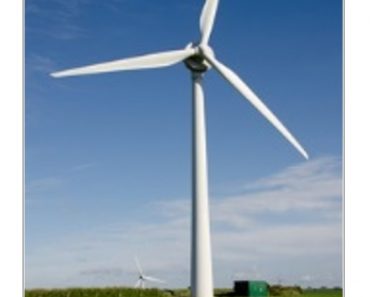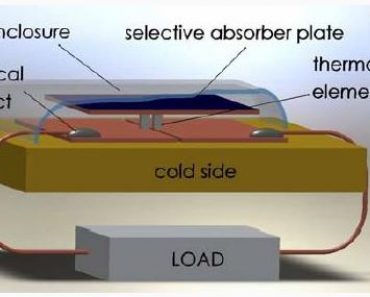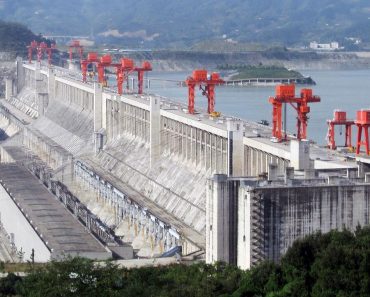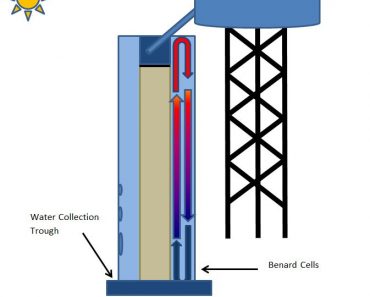Contents
The main function of an inverter is to convert DC current in to AC current. Inverters come in all shapes and sizes. They are classified mainly on the power rating or their throughput. For example there are small inverters available that can convert the output from a car battery to run an AC appliance. On the other hand there are large inverters that convert the output from whole solar farms. For the domestic consumer, inverters are available with power rating of 500 W to 10,000 Watts.
Similarly inverters are also classified based on the input they accept i.e. It can accept 12 V DC, 24V DC, 48 V DC or even 96 V DC. Note that 48 V DC input is the most common type of inverter used for residential solar PV systems while 12 V DC input inverters are more common in portable applications. Power inverters in Solar farms can also have input voltages from 300 VDC to 450 VDC.
Off Grid and Grid Tie Inverters
An off grid inverter is a product that works completely isolated from the grid. It has no provision to tap into grid electricity or feed electricity to the grid. Normally if a Solar PV system is designed with an off-grid inverter, than the panels are connected with a charge controller. The charge controller is connected to the batteries. The batteries are than connected with and off grid inverter. Off-grid inverters can also be made for portable use, while grid-tied inverters cannot. Therefore the inverters that are labelled for use in caravans and motor homes are off-grid inverters.
A Grid tie inverter on the other hand can be directly connected to the solar array and the grid. There are also charge control options in the grid tie inverters and therefore some variants can also be connected to the battery. In other words, a Grid Tie inverter can become the central component of a PV system. The advantage of using Grid Tie inverter is that it can feed excess electricity to the grid and take advantage of net metering. Grid-Tie inverters are more expensive because of their additional functionality. Grid Tie inverters can be used without batteries.
Some Grid Tie inverters have added functionality of shutting down the PV system in case of a power outage. This is done to prevent Islanding i.e Grid Tie Inverters ensure that in the event of a blackout, it will shut down to prevent the energy it transfers from harming any line workers who are sent to fix the power grid.
Advantages of Grid-Tie Inverter
- Ensures smooth power to the load. Has the ability to top up from either the grid or the battery bank in case the panels are not producing enough to meet the load.
- Can charge the batteries using the energy from the grid (provided grid charger in in built). This feature is very useful when batteries are drained and panels are not producing enough.
- Can feed to the grid when panel are producing extra amount of energy.
Pure Sine Wave and Modified Sine Wave Inverters
There are two different kinds of output that an inverter may furnish. The first one is called pure Sine wave and the second one is called modified Sine wave. Modified Sine Wave Inverters (MSWI) are much cheaper than Pure Sine Wave Inverter and that is because MSWI use power electronics that act as a switch and they basically turn on and off the current to create a staircase pulse (Square Wave). Appliances using Modified Sine Wave tend to overuse power and run hotter and thus inefficiently.
Pure Sine Wave Inverter runs the electrical appliances much smoother. Appliances run without buzz or hiss sounds.
Low Frequency and High Frequency Inverter
Investors can be classified in to two categories based on the speed of the operation of transistor switches in their commutator circuit. They are namely low frequency and high frequency inverter.
A low frequency inverter has several advantages but they are more expensive and because of the presence of massive iron core in their transformer, they are also bigger and heavier compared to their high frequency counterpart. Often difficult loads that require high surge at the beginning such as motors, compressors or pumps are very well managed by a low frequency inverter.
Field Effect Transistors (FET’s) in LF invertor can operate cooler, in part due to the slower frequency of switching required to produce AC power.
In a high frequency inverter, have almost twice the number of components compared to LF inverters. Nonetheless they are still smaller and lighter overall, because of the absence of a central large transformer. They are not very well equipped to handle industrial loads. Therefore if a large pump, a motor, or an air conditioner is to be run than LF is the better option. Their application is appropriate for a wide variety of uses like tool battery chargers, small appliances, A/V and computers. HF Inverters make up the large majority of inverters available in the retail market are high frequency. High frequency inverters are also available in lower power categories such as 300W, 600W, 1000W, 1500W etc. as opposed to Low frequently inverter with their power levels normally within the thousands, typically 2000W-3000W
MPPT and PWM Inverter
A solar inverter is different from a normal inverter in that it has a charge controller built –in to it. Therefore inverters used by Solar systems also come with either MPPT or PWM options. The MPPT functionality allows more power to be drawn out of the solar panels. This is done by keeping the panels output close to the maximum power point of the panel. Inverters with MPPT functionality are more expensive than PWM option. It has been noted experimentally that overall MPPT can make the solar energy system up to 20% more efficient.
The PWM charge controller on the other hand is a good low cost solution for small systems only, when solar cell temperature is moderate to high (between 45°C and 75°C).
PWM Inverters prefer unshaded irradiance on the panel and tend not to work very efficiently if the panel is shaded.
Efficiency of Inverters
Losses are expected whenever we are dealing with energy conversion process. Similarly when we convert DC electricity to AC, there will be losses. As of July 2009, most grid-tie inverters available on the market have peak efficiencies of over 94% and some as high as 96%. The energy lost during conversion is mostly heat.
Output Types
Inverters can give an output at 110 V, 220 V at 50 to 60 Hz for residential use.
3 Phase AC Inverters are also available and are used with Large Arrays of PV panels in a solar farm.
Useful Link
Video explaining different types of Inverter Options
Please feel free to share this article using the buttons below

